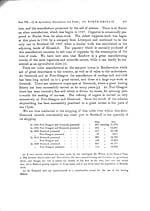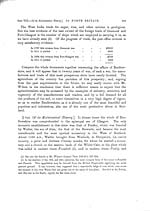Volume 6
(378) Page 818
Download files
Individual page:
Thumbnail gallery: Grid view | List view

818 Such were the registered shipping of Greenock and Port-Glasgow in those several years. It will give a different view of the shipping of those two ports if we show how they were employed. Foreign Trade. Coasters. Fishing. Totals. Ships. Tons. Ships. Tons. Ships. Tons. Ships. Tons. Greenock in 1800, 204 26,707 165 9546 187 7954 556 44,206 Port-Glasgow in 1800, 51 8837 29 2117 7 218 87 11,172 Greenock in 1810, 181 32,508 110 7468 69 2911 360 42,887 Port-Glasgow in 1810, 65 12,646 39 2624 1 18 105 15,288 Greenock in 1818, 171 34,296 99 6310 68 2774 338 43,380 Port-Glasgow in 1818, 66 11,242 14 962 � � 70 12,204 Such are the accurate representations of the custom-house registers, and from statements with regard to shipping we are easily conducted to the analogous doctrines of trade. We may easily suppose that the commerce of a shire enjoying such opu- lent manufactures, and such a numerous shipping, must be considerable. The traffic in corn and flour, and the manufacture of corn for the supply of such a population, forms a necessary and important branch. The value of the corn and flour which were imported into the Clyde in 1810, amounted to �397,000. The increase of the foreign trade at Greenock and Port-Glasgow since the commencement of the present century is considerable, while the coast commerce of both those ports seems to have declined since the year 1800. But this domestic traffic has only shifted the scene of its operations to Glasgow, many of the coasters going now directly to Glasgow instead of stopping at Greenock or Port-Glasgow. This evinces the beneficial effects of the improvements in the navigation of the river Clyde, there having been expended �2700 annually since 1797, in deepening the channel of the river (h) The very material of such a manufacture as the cotton of Renfrewshire creates much trade (i). What must the export by land and water be of fine manufactured cotton ? (h) The number of vessels that came up to the bridge of Glasgow in 1796 amounted to 1326, carrying 55,980 tons; but the number in 1806 amounted to 1678 vessels, carrying 80,683 tons, being an increase of 24,703 tons. Wilson's General View, 211. (i) In 1790 there were imported into the Clyde of cotton wool - 1,757,504 lbs. In 1810 there were imported into Greenock and Port-Glasgow 9,962,359 " In 1811 " " " - 11,002,723 "
Set display mode to:
![]() Universal Viewer |
Universal Viewer | ![]() Mirador |
Large image | Transcription
Mirador |
Large image | Transcription
Images and transcriptions on this page, including medium image downloads, may be used under the Creative Commons Attribution 4.0 International Licence unless otherwise stated. ![]()
| Caledonia, or, An account, historical and topographic of North Britain from the most ancient to the present times > Volume 6 > (378) Page 818 |
|---|
| Permanent URL | https://digital.nls.uk/74531786 |
|---|---|
| Description | Vol. VI. |
|---|---|
| Attribution and copyright: |
|

